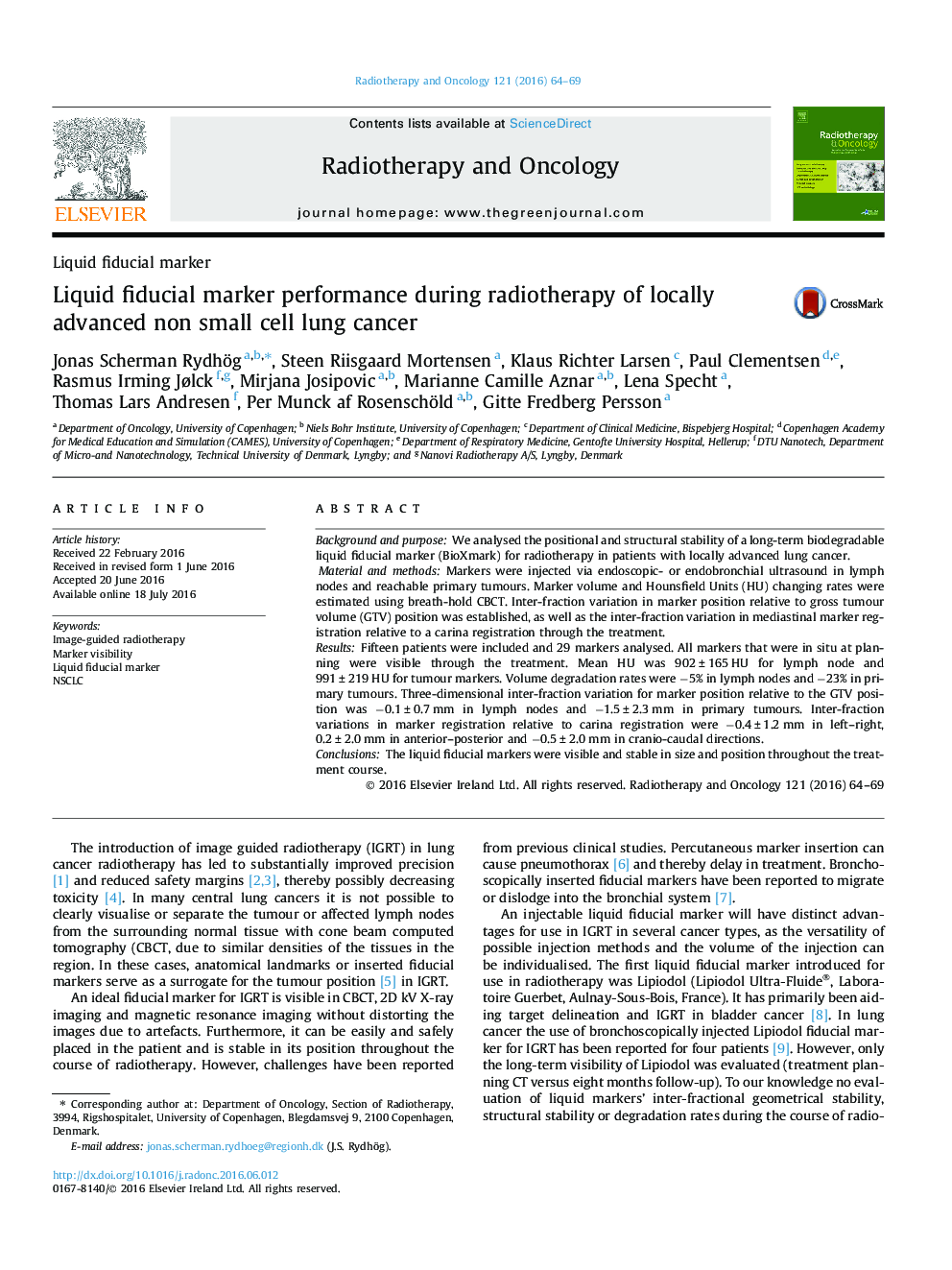| Article ID | Journal | Published Year | Pages | File Type |
|---|---|---|---|---|
| 5529795 | Radiotherapy and Oncology | 2016 | 6 Pages |
Background and purposeWe analysed the positional and structural stability of a long-term biodegradable liquid fiducial marker (BioXmark) for radiotherapy in patients with locally advanced lung cancer.Material and methodsMarkers were injected via endoscopic- or endobronchial ultrasound in lymph nodes and reachable primary tumours. Marker volume and Hounsfield Units (HU) changing rates were estimated using breath-hold CBCT. Inter-fraction variation in marker position relative to gross tumour volume (GTV) position was established, as well as the inter-fraction variation in mediastinal marker registration relative to a carina registration through the treatment.ResultsFifteen patients were included and 29 markers analysed. All markers that were in situ at planning were visible through the treatment. Mean HU was 902 ± 165 HU for lymph node and 991 ± 219 HU for tumour markers. Volume degradation rates were â5% in lymph nodes and â23% in primary tumours. Three-dimensional inter-fraction variation for marker position relative to the GTV position was â0.1 ± 0.7 mm in lymph nodes and â1.5 ± 2.3 mm in primary tumours. Inter-fraction variations in marker registration relative to carina registration were â0.4 ± 1.2 mm in left-right, 0.2 ± 2.0 mm in anterior-posterior and â0.5 ± 2.0 mm in cranio-caudal directions.ConclusionsThe liquid fiducial markers were visible and stable in size and position throughout the treatment course.
